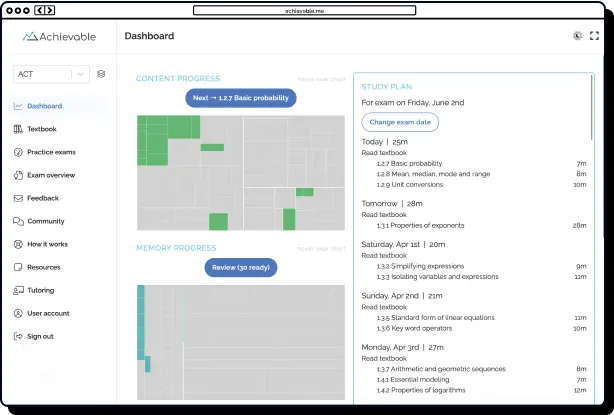
CLT scores explained




As college admissions continue to change, students and families are exploring more options for standardized testing. One exam that is gaining popularity is the Classic Learning Test (CLT). Known for its emphasis on classical education, shorter length, and quick score turnaround times for school-based tests, the CLT can be a valid alternative to the SAT and ACT for many students. Let’s break down what the CLT is, how the scoring works, when you’ll get your results, and what your score means in the context of college admissions.

So, what is the CLT?
The CLT exam (Classic Learning Test) is a college entrance assessment that measures students’ academic abilities across reading, grammar, writing, and mathematical reasoning. Unlike other standardized tests, the CLT features passages from classic literature, pivotal historical works, and thought-provoking philosophical writings, rather than contemporary sources. This approach challenges students to demonstrate advanced comprehension, analytical thinking, and logical reasoning skills.
The CLT exam is structured with 120 multiple-choice questions divided into three main sections:
- Verbal Reasoning (40 questions)
- Grammar and Writing (40 questions)
- Quantitative Reasoning (40 questions)
Test takers have 120 minutes to complete the CLT, not including an optional (unscored) essay component for in-school test-takers. No calculator is allowed during the quantitative section, unlike other college admissions exams. The CLT can be taken securely online from home or administered at your school or at approved testing centers.
Accepted by over 300 colleges and universities throughout the U.S., especially among liberal arts institutions and religiously affiliated colleges, the CLT is increasingly recognized as a rigorous alternative for college admissions.
When are CLT scores released?
One major advantage of the CLT is its rapid score reporting process. For most test-takers, CLT test results are available within a few weeks, typically on the third Wednesday following the completion of the exam. If you choose to take the CLT online, you might even receive your official test score in under a week.
For those who complete the exam at a school or opt for the paper-based test format, scores may require additional processing time. However, in almost all cases, your CLT test results are released within two weeks of your test date. As soon as scores are published, you’ll get an email notification and can conveniently access your full score report through your CLT account.
CLT scoring breakdown
The CLT is evaluated with a total score of 120 points, with each individual section of the exam contributing up to 40 points toward your overall score.
Here is a general overview of how CLT scores are typically interpreted:
- 110 to 120: This range represents the highest percentile. Achieving a score in this top bracket signals exceptional academic performance, and nearly all colleges will consider this score highly competitive.
- 100 to 109: Scores in this category are regarded as strong and above average. Many colleges will view these scores favorably in the admissions process.
- 90 to 99: Represents slightly above average CLT scores, indicating solid academic ability and preparation.
- 70 to 89: Falls within the average range for most test-takers. Results in this band are common and generally reflect competent performance.
- Below 70: Considered the developing range; while lower, these scores can still provide key insights into a student’s strengths and areas for academic growth.
By understanding these score ranges, students and families can better assess performance and set realistic goals for college admissions.

What is the average CLT score?
Most students achieve CLT scores between 75 and 80, which falls within the typical average range for CLT test scores. To offer a clearer perspective, here are some approximate equivalencies between CLT scores and other standardized test scores:
- A CLT test score of 114 is comparable to a 1560 on the SAT or a 35 on the ACT
- A CLT score of 97 closely matches a 1360 on the SAT or a 30 on the ACT
These score comparisons make it easier for students and families to interpret CLT scores in relation to more widely recognized testing formats.
Example colleges and CLT score ranges
While not all universities currently accept the CLT, the list of colleges that do is steadily growing nationwide. Many colleges now recognize the CLT as part of their admissions process. Below are some of the leading CLT colleges, along with the typical score ranges they expect from prospective students and scholarship information:
Hillsdale College
- Recommended score: 100 or higher
- Highly competitive range: 110 and above
- Considers CLT scores in academic scholarship awards
Benedictine College
- Average admitted score: 90 to 100
- Considers CLT scores in academic scholarship awards
- Students who earn a CLT score of at least 84 are eligible to enter the Presidential Scholars Competition
Liberty University
- Typical score range: 80 to 100
- Students who score above 81 on the CLT will receive $1,000 per year in scholarships
- Students who score above 112 will receive full tuition
Christendom College
- Admitted student average: 85 to 95
- Automatically offers scholarships ranging between $6,000 and $15,000 per year based on CLT scores
- Offers up to five full-tuition scholarships to CLT10 National Award recipients
New Saint Andrews College
- Competitive score: 90 and above
- Considers CLT scores in academic scholarship awards
A CLT score of 90 or higher is considered competitive at most CLT colleges. Each college may have its own process for evaluating test scores: some schools will review them holistically alongside important factors such as GPA, interviews, and extracurricular achievements. Other universities may place greater emphasis on strong results if standardized testing is a significant component of their admissions criteria.

Final thoughts
The CLT exam offers a distinctive and rigorous testing experience for students who appreciate classical texts and logic-driven questions. With its increasing acceptance among colleges and flexible testing options, this exam offers a great alternative to traditional assessments. If you are preparing for the CLT, it’s important to use reputable sample materials and become comfortable with the exam format. After receiving your CLT test scores, leverage them to help refine your college list and strengthen your application strategy, especially when targeting schools that recognize or prefer the CLT. Knowing how your results compare to those of accepted students will offer valuable clarity in your college admissions process.

